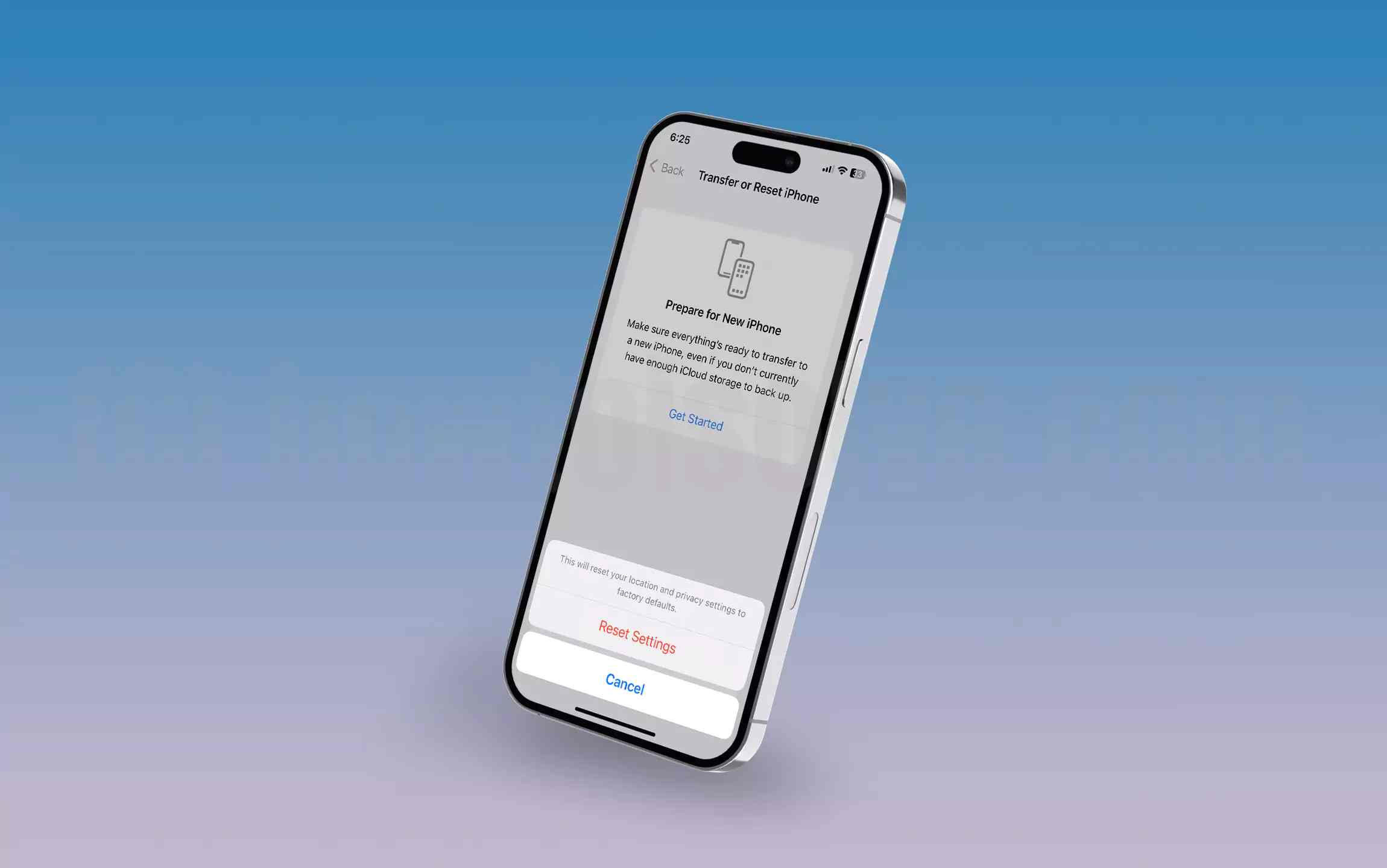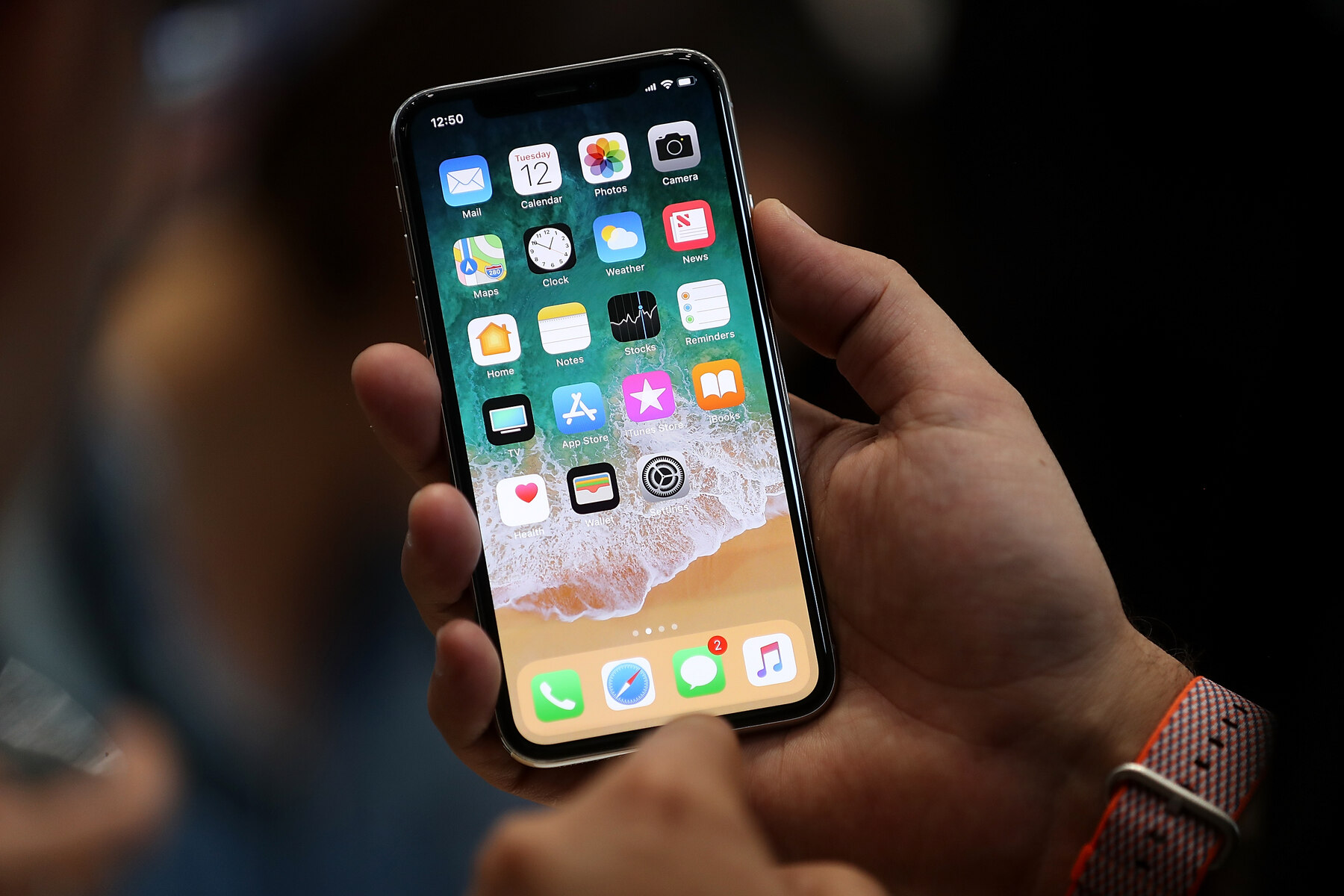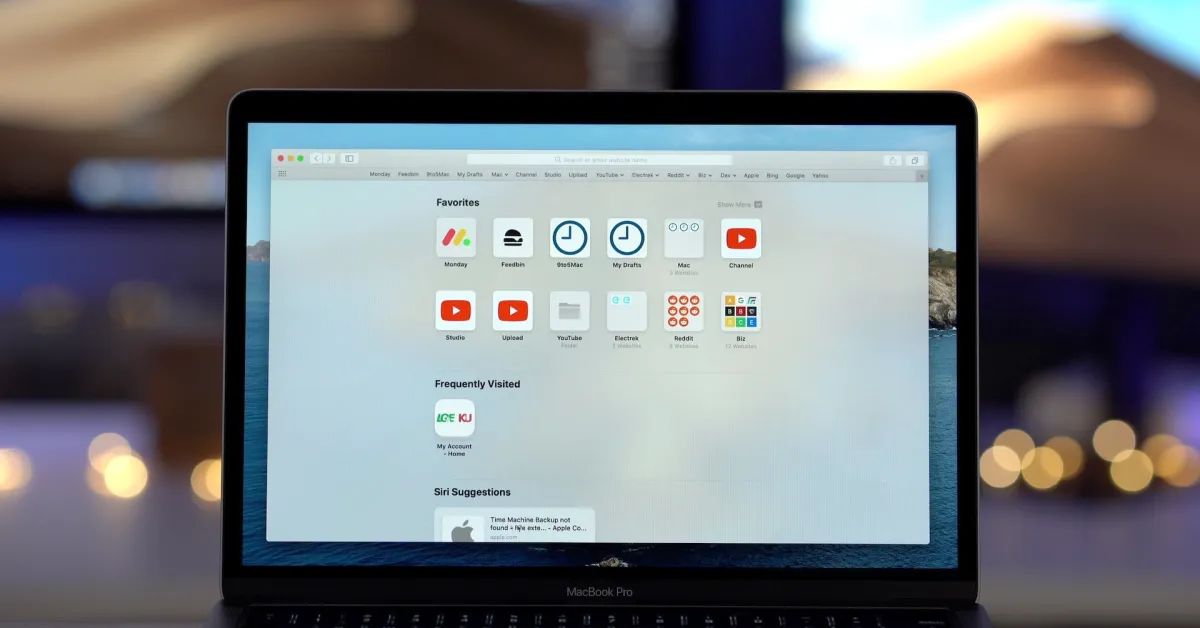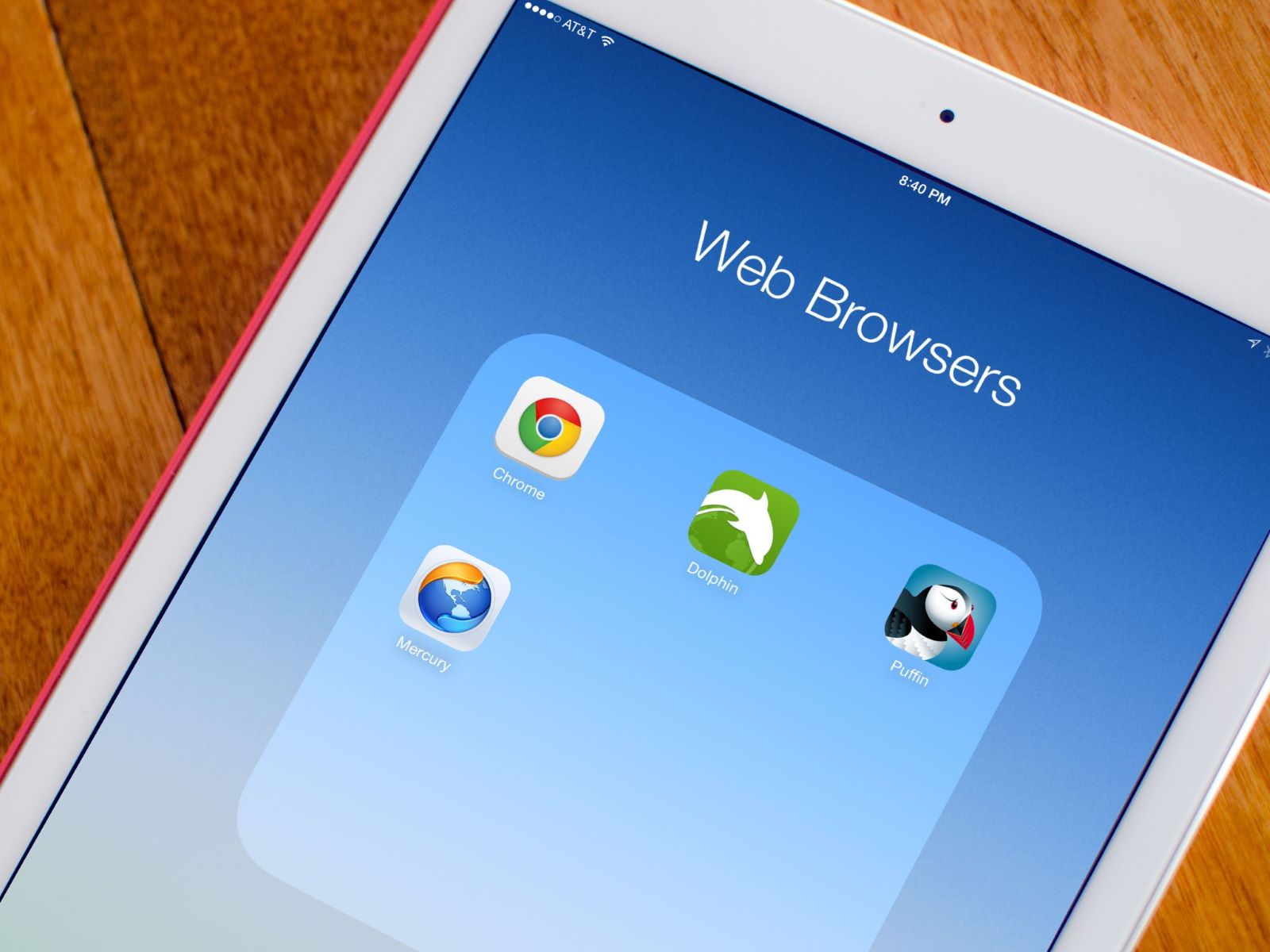Introduction
When it comes to browsing the web, Safari stands out as a popular choice among Apple users. Its sleek interface and seamless integration with iOS devices make it a go-to option for many. However, there are times when Safari's location services may not function as expected, leading to frustration when trying to access location-based services or websites. If you've found yourself in this predicament, fear not, as there are several troubleshooting steps you can take to rectify this issue and get your location services back on track.
In the following sections, we'll delve into various methods to address location-related issues on Safari. From checking Safari settings to clearing cache and cookies, enabling location services, updating Safari and iOS, and resetting location and privacy settings, we'll explore step-by-step solutions to help you regain control over your location settings within Safari. Whether you're experiencing inaccuracies in location data or a complete inability to access location-based features, this guide aims to equip you with the knowledge and tools to resolve these issues effectively.
So, if you've ever wondered, "How can I fix my location on Safari?" or "Why is Safari not showing my correct location?" – you're in the right place. By the end of this comprehensive guide, you'll be well-equipped to troubleshoot and resolve location-related issues on Safari, ensuring a seamless browsing experience that leverages the full potential of location-based services. Let's dive in and explore the various strategies to address location-related challenges within Safari.
Checking Safari Settings
Before delving into more advanced troubleshooting steps, it's essential to start with the basics. Checking Safari settings can provide valuable insights into any potential issues affecting location services. Here's how to go about it:
-
Open Safari Preferences: Begin by launching Safari and navigating to the "Safari" menu located in the top-left corner of the screen. From the dropdown menu, select "Preferences" to access the settings panel.
-
Privacy Settings: Within the Preferences window, click on the "Privacy" tab. Here, you'll find the "Website tracking" section, which includes options for managing website tracking and location access. Ensure that the "Website tracking" and "Ask websites not to track me" options are appropriately configured based on your preferences.
-
Websites: Next, navigate to the "Websites" tab within the Preferences window. Here, you can explore various website-specific settings, including location access. Check if location access is enabled for specific websites that you frequently visit. You can adjust these settings based on your preferences.
-
Security Settings: It's also worth reviewing the "Security" tab within Safari Preferences. Here, you can manage website settings, including location access, for individual websites. Ensure that the settings align with your expectations and requirements.
-
Extensions: If you have extensions installed in Safari, they might impact location services. Navigate to the "Extensions" tab within Safari Preferences and review the installed extensions. Some extensions might interfere with location services, so consider temporarily disabling them to see if it resolves the issue.
By thoroughly examining and adjusting these settings, you can gain a better understanding of how Safari handles location services and make necessary adjustments to ensure smooth functionality. If you encounter any discrepancies or unexpected configurations during this process, addressing them can potentially resolve location-related issues within Safari.
Checking Safari settings serves as a foundational step in troubleshooting location-related challenges. By familiarizing yourself with these settings and ensuring they align with your browsing preferences, you can lay the groundwork for a more seamless and accurate location experience within Safari.
Enabling Location Services
Enabling location services within Safari is crucial for accessing location-based features and ensuring that websites can accurately determine your geographical position. If you've encountered issues with Safari not displaying your correct location, it's essential to verify that location services are enabled and properly configured. Here's a detailed look at the steps to enable location services within Safari and iOS:
Safari Location Settings
-
Safari Preferences: Begin by accessing Safari Preferences from the Safari menu. Within the Preferences window, navigate to the "Websites" tab. Here, you'll find the "Location" option in the left-hand sidebar. Ensure that the dropdown menu next to "When visiting other websites" is set to "Ask" or "Allow." This setting determines how Safari handles location requests from websites.
-
Individual Website Settings: Safari allows you to manage location access for individual websites. When you visit a website that requests your location, Safari prompts you to allow or deny access. If you've previously denied access to a specific website, you can revisit the site and grant location permissions by clicking on the lock icon in the address bar and adjusting the location access settings.
iOS Location Services
-
Device Settings: On your iOS device, navigate to "Settings" and select "Privacy." Within the "Privacy" settings, tap on "Location Services." Here, you can enable location services for Safari by ensuring that the toggle switch next to "Safari Websites" is turned on. This step ensures that Safari can access your device's location information when browsing websites.
-
Location Permissions: Below the list of apps with location access, you'll find the "Safari Websites" option. Tap on it to configure the location access settings for Safari. You can choose between "Never," "Ask Next Time," and "While Using the App" to determine how Safari interacts with location requests from websites.
Troubleshooting Tips
- Restart Safari: After adjusting location settings, consider restarting Safari to ensure that the changes take effect.
- Device Restart: If you've made changes to location settings on your iOS device, a device restart can help in applying the updated configurations.
By following these steps and ensuring that location services are enabled within Safari and iOS, you can pave the way for a more seamless and accurate location experience while browsing the web. Whether you're accessing location-based services, mapping websites, or other location-dependent features, enabling location services is essential for unlocking the full potential of Safari's capabilities.
Clearing Safari Cache and Cookies
Clearing the cache and cookies in Safari can often resolve location-related issues by eliminating stored data that might be causing conflicts or inaccuracies. The cache stores temporary website data, while cookies retain information such as login credentials and site preferences. Over time, this data can accumulate and potentially interfere with location services. Here's a detailed look at the steps to clear the cache and cookies in Safari:
-
Accessing Safari Preferences: Begin by launching Safari and navigating to the "Safari" menu located in the top-left corner of the screen. From the dropdown menu, select "Preferences" to access the settings panel.
-
Privacy Settings: Within the Preferences window, click on the "Privacy" tab. Here, you'll find the "Manage Website Data" button. Clicking on this button opens a window displaying the stored website data, including cache and cookies.
-
Removing Website Data: In the "Manage Website Data" window, you have the option to remove specific website data or clear everything at once. To clear all data, simply click on the "Remove All" button. If you prefer to selectively remove data, you can scroll through the list and choose individual websites for data removal.
-
Confirmation: After selecting the data for removal, Safari prompts for confirmation. Once confirmed, the cache and cookies associated with the selected websites are cleared from Safari.
-
Restart Safari: After clearing the cache and cookies, consider restarting Safari to ensure that the changes take effect. This step can help in refreshing the browsing environment and ensuring that any lingering data conflicts are resolved.
By clearing the cache and cookies in Safari, you can effectively eliminate stored data that might be contributing to location-related issues. This process provides a clean slate for Safari to interact with websites, potentially resolving inaccuracies or conflicts that hinder location services. Whether you're experiencing location discrepancies or encountering errors with location-dependent features, clearing the cache and cookies can serve as a valuable troubleshooting step to restore smooth functionality within Safari.
Updating Safari and iOS
Ensuring that both Safari and the iOS operating system are up to date is crucial for maintaining optimal performance and resolving potential issues, including those related to location services. Regular updates introduce bug fixes, security enhancements, and feature improvements that can address underlying issues affecting Safari's functionality, including its handling of location data. Here's a detailed look at the steps to update Safari and iOS, along with the potential benefits of staying current with the latest software versions.
Updating Safari
-
Check for Updates: Launch Safari and navigate to the "Safari" menu. From the dropdown menu, select "About Safari" to check the current version. If an update is available, you'll be prompted to download and install it. Alternatively, you can visit the App Store and navigate to the "Updates" tab to check for Safari updates.
-
Install Updates: If an update is available, follow the on-screen prompts to download and install the latest version of Safari. This process ensures that you have access to the most recent features, improvements, and bug fixes, which can potentially address location-related issues.
Updating iOS
-
Accessing Settings: On your iOS device, navigate to "Settings" and select "General." From the General settings, tap on "Software Update" to check for the latest iOS version.
-
Download and Install: If an iOS update is available, tap "Download and Install" to initiate the update process. Ensure that your device is connected to a stable Wi-Fi network and has sufficient battery life to complete the update.
-
Benefits of Updates: iOS updates often include enhancements to location services, GPS accuracy, and overall system stability. By staying current with the latest iOS version, you can leverage these improvements to address any underlying issues affecting location functionality within Safari.
Potential Benefits
-
Bug Fixes: Updates often include fixes for known issues, including those related to location services. By updating Safari and iOS, you can benefit from these bug fixes, potentially resolving inaccuracies or errors in location data.
-
Security Enhancements: Staying current with software updates is crucial for maintaining a secure browsing environment. Updated versions of Safari and iOS often include security patches that can safeguard against potential vulnerabilities that might impact location services.
-
Improved Compatibility: Updated software versions ensure better compatibility with websites and location-based services, reducing the likelihood of compatibility issues that can affect location functionality.
By prioritizing the regular updating of Safari and iOS, you can harness the benefits of enhanced performance, improved security, and potential issue resolution, including those related to location services. Keeping both Safari and iOS up to date is a proactive measure that can contribute to a more seamless and reliable browsing experience, particularly when it comes to leveraging location-based features within Safari.
Resetting Location and Privacy Settings
Resetting location and privacy settings can serve as a comprehensive solution for addressing persistent issues related to location services within Safari. By resetting these settings, you can effectively clear any conflicting configurations or corrupted preferences that might be hindering the accurate functioning of location-based features. Here's a detailed exploration of the steps involved in resetting location and privacy settings, along with the potential benefits of this troubleshooting approach.
Resetting Location Services on iOS
-
Accessing Settings: Begin by navigating to the "Settings" app on your iOS device and selecting "Privacy."
-
Location Services: Within the "Privacy" settings, tap on "Location Services" to access the location permissions and settings for various apps and services.
-
Resetting Location Services: Scroll down to the bottom of the "Location Services" screen and select "System Services." Here, you'll find the option to "Reset the Location & Privacy." Tap on this option to initiate the reset process.
-
Confirmation: A confirmation prompt will appear, informing you that this action will reset all location and privacy settings to their default configurations. Confirm the reset to proceed.
-
Restarting the Device: After resetting the location and privacy settings, consider restarting your iOS device to ensure that the changes take effect.
Potential Benefits of Resetting Location and Privacy Settings
-
Clearing Conflicting Configurations: Resetting location and privacy settings can effectively clear any conflicting or corrupted configurations that might be impacting the accurate functioning of location services within Safari.
-
Restoring Default Settings: By resetting these settings, you revert to the default configurations, potentially eliminating any irregularities or misconfigurations that were causing location-related issues.
-
Comprehensive Troubleshooting: This approach offers a comprehensive troubleshooting method that addresses location and privacy settings in their entirety, providing a holistic solution for persistent issues.
-
Improved Accuracy: Resetting location and privacy settings can contribute to improved accuracy in location-based services, ensuring that Safari can access and utilize location data effectively.
By resetting location and privacy settings on your iOS device, you can embark on a thorough troubleshooting journey aimed at resolving persistent issues affecting location services within Safari. This approach offers a comprehensive reset of location and privacy configurations, potentially paving the way for a more accurate and reliable location experience while browsing the web.
Conclusion
In conclusion, troubleshooting location-related issues within Safari involves a systematic approach that encompasses checking settings, enabling location services, clearing cache and cookies, updating Safari and iOS, and resetting location and privacy settings. By navigating through these steps, users can address a wide range of challenges, from inaccuracies in location data to the inability to access location-dependent features.
The process begins with a thorough examination of Safari settings, where users can fine-tune privacy, website access, and extension configurations to ensure that location services operate seamlessly. Enabling location services within Safari and iOS is paramount, as it forms the foundation for accessing location-based features and ensuring accurate geographical positioning while browsing.
Clearing the cache and cookies in Safari serves as a valuable troubleshooting step, effectively eliminating stored data that might interfere with location services. This process provides a clean slate for Safari to interact with websites, potentially resolving inaccuracies or conflicts that hinder location functionality.
Furthermore, staying current with the latest versions of Safari and iOS is essential for leveraging bug fixes, security enhancements, and improved compatibility that can address underlying issues affecting location services. Regular updates introduce crucial improvements that contribute to a more seamless and reliable browsing experience, particularly when it comes to utilizing location-based features within Safari.
Finally, resetting location and privacy settings offers a comprehensive solution for addressing persistent issues related to location services. By reverting to default configurations and clearing conflicting settings, users can embark on a thorough troubleshooting journey aimed at restoring accurate and reliable location functionality within Safari.
By following these comprehensive troubleshooting steps, users can regain control over their location settings within Safari, ensuring a seamless browsing experience that leverages the full potential of location-based services. Whether it's accessing mapping websites, location-dependent features, or simply ensuring accurate positioning, the strategies outlined in this guide equip users with the knowledge and tools to address location-related challenges effectively.

























